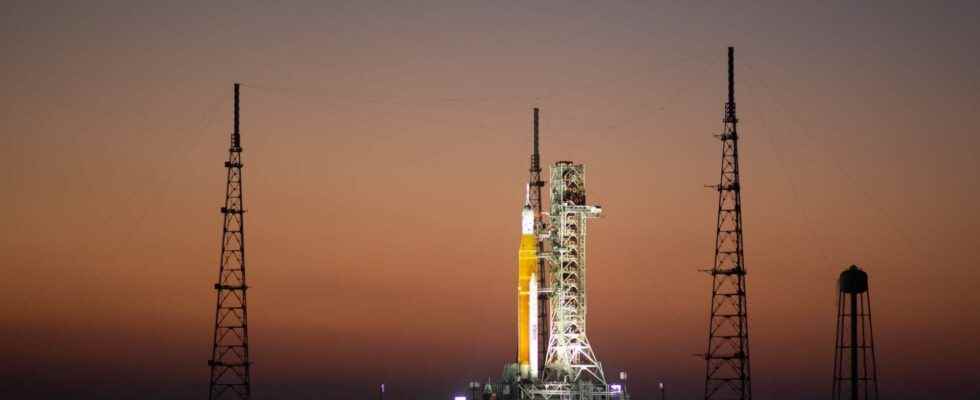NASA is carrying out a major test with the Artemis I rocket this Wednesday, September 21, 2022. Some Space Launch System tanks will be filled with liquid hydrogen to verify that the leak is completely fixed.
The conquest of space is punctuated by hazards, such as the postponement of the take-off of the Artemis I lunar mission. On two occasions, NASA attempted to launch the Space Launch System (SLS) rocket towards the Moon, in vain. During the two tests, a technical incident was noted during the filling of the rocket tanks: a leak of liquid hydrogen (which NASA often uses as fuel for its rockets, although it is difficult to handle).
Result: the first mission of the Artemis program is still on the ground. But the American space agency is working to get the SLS off to the Moon as soon as possible. This Wednesday, September 21, 2022, NASA is carrying out an important test in this direction: a test of filling the rocket tanks, in cryogenic conditions. The prospect of reattempting an Artemis I launch depends on how this test goes. This trial can be followed online and live.
- When ? Wednesday, September 21, 2022, from 1 p.m. (Paris time);
- Where ? The test can be followed on YouTube or via NASA’s web TV. You can also watch this live video streamed by Kennedy Space Center’s press service YouTube channel, showing the rocket on its launch pad.
- What ? A test of filling the tanks of the Space Launch System rocket, on which the takeoff of the Artemis I mission to the Moon depends.
What to expect during this Artemis I rocket test?
After the last launch attempt of Artemis I, on September 3, NASA proceeded to replace seals that are on a pipe supplying the rocket with fuel. Running very cold hydrogen into the SLS tanks will check that everything is working properly with the new seals. During this test, only the mid-stage and upper-stage tanks of the SLS will be fueled. The Orion capsule, which is on top of the rocket, as well as the boosters, will not be filled.
” This test will allow teams to confirm the repair of a hydrogen leak observed during an Artemis I launch attempt in early September, to evaluate updated propellant loading procedures and to carry out additional evaluations “Summarizes NASA. The test will end when all the objectives are achieved, adds the space agency.
The new procedures should also make it possible to proceed more gradually. NASA has planned a slower transition of temperatures and pressures during tank filling to reduce the likelihood of leaks that could be caused by rapid changes in temperature or pressure “, completes the space agency in another publication.
As for the weather, which can strongly influence rocket take-offs, it is announced as favorable during this test. NASA notes a 15% probability of having lightning around the launch pad (within a radius of 9 km), which does not prevent this test from being organised.
